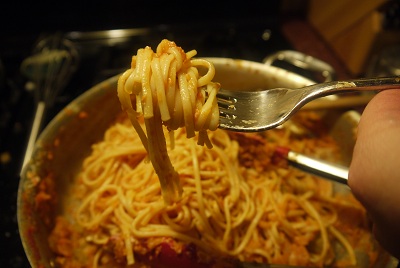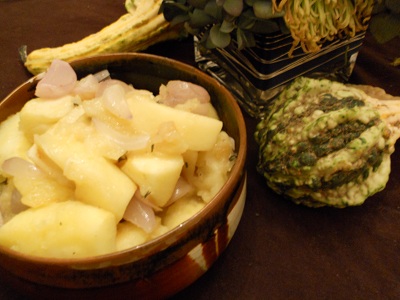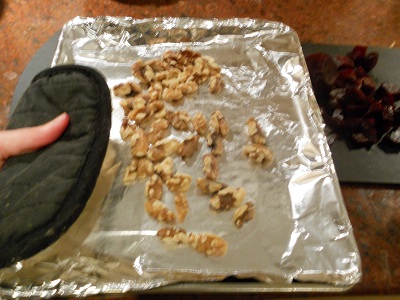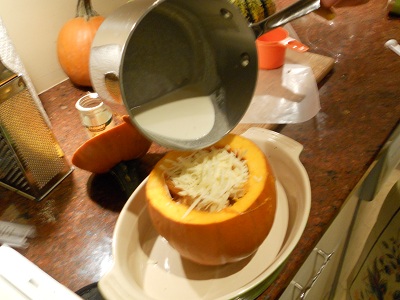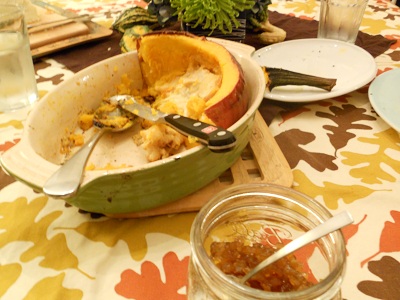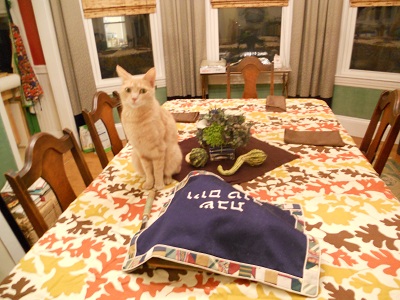We lost my Great Uncle Harry this year. He really was great. He always had a fun story to tell, or a perfect song to sing. He was a vegetarian and for decades built these wonderful, multilayered Dagwood sandwiches for Shabbat breakfast. We were all lucky enough to visit Uncle Harry and Auntie Julie about two months before he died, because we went to a family reunion in London right around New Year’s. We flew in from Boston; Sylvie, Miriam and Leo flew in from DC; my Cousin Larry and Ashley flew in from New Jersey; and my dad came in from Jerusalem. It was Sylvie’s idea, really. She wanted the kids to meet the British relatives before it was too late — a good call on her part.
We were only in London for a couple of days, but we were able to score a table at NoPi. We ordered every vegetable dish on the menu, and a perfect piece of fish. I had a kumquat and passionfruit mocktail and rhubarb Eaton mess. It was everything I wanted it to be. Pro tip: They only have two high chairs in the whole restaurant, and no changing table in their amazing mirrored bathroom, so plan accordingly.
Lilli and I caught something on the plane on the way over, and because I was 20 weeks pregnant and had no immune system, I couldn’t really do much touring. Or stand. Or make conversation. But Rich did get to see a real football match with my cousin Jonah. By the time I made it to my doctor’s office on New Year’s Eve, my temp had spiked to 102.8F. But the trip was still well worth it, and I really miss my Cousin Jenny. Hopefully we’ll get to see Jonah soon; he is in Philadelphia for the year studying at Temple and drinking American beer.
It was never the right time to talk about finally eating at Ottolenghi’s restaurant, because it never felt right to talk about Uncle Harry. But it’s Day of the Dead on Sunday, and I’m looking forward to joining my friend Tania and her family for her holiday, so it seems appropriate to honor Harry, as well Rich’s Uncle Tommy and Auntie Ruthie and his professor Svetlana Boym, all of whom we lost far too soon this year.
If I find my blanched almonds in time, I’ll be making this horchata for the occasion. It’s a traditional Mexican sweetened rice drink, and it has become my litmus test of whether a Mexican restaurant is worth my time. Aleza introduced me to the beverage when we stumbled into a real hole in the wall in Williamsburg. This was in 2002, back when there were still holes in walls in Williamsburg.
This particular recipe is from the Ultimate Nachos cookbook, also the cookbook for these pickled red onions I use all the time. The drink is vegan, and you need a blender and an overnight to make it work. Sure, it’s really meant for a hot summer’s day, but I think it will also work at the ofrenda.
Horchata from Ultimate Nachos by Lee Frank & Rachel Anderson
Ingredients
1 cup long-grain rice, rinsed and drained
1 cup blanched almonds
4 cinnamon sticks
1 quart water
¾ cup sugar
2 teaspoons vanilla extract
2 cups ice cubes
Ground cinnamon, to taste
Ingredients
Put the rice, almonds, and cinnamon sticks in a blender. Blend the mixture into a powder.
Add the water, sugar, and vanilla and blend for 90 seconds.
Chill the mixture overnight in the fridge.
Strain the liquid into glasses over ice cubes and serve, sprinkled with ground cinnamon to taste.










